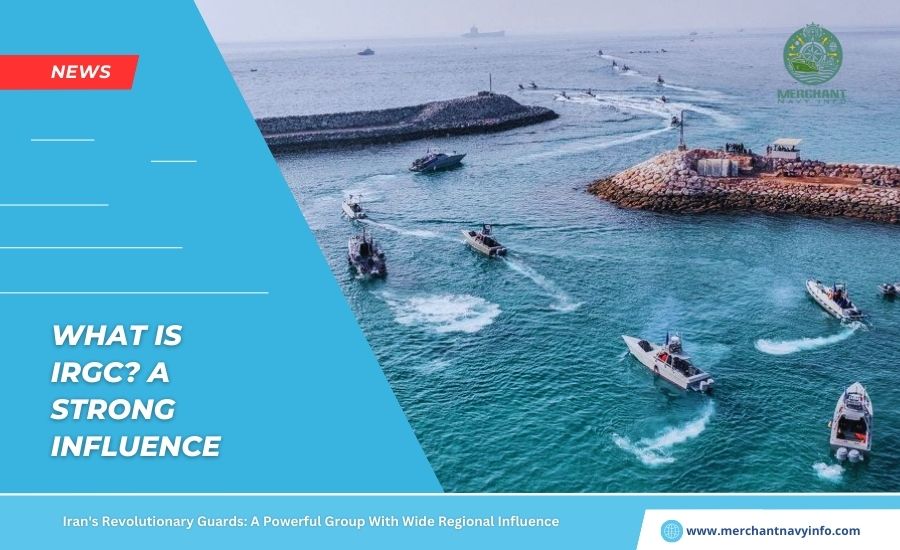
If Iran retaliates for the assassination of its close ally, Hamas leader Ismail Haniyeh, in Tehran last week, the IRGC could play a central role.
Here are some questions and answers about Iran’s main military force. The Islamic Revolutionary Guards Corps (IRGC), which has its own army, navy, air force, and intelligence services.
What is the IRGC?
It was created shortly after the 1979 Islamic Revolution to protect the Shia theocracy and regulate the regular armed forces.
The IRGC answers to Supreme Leader Ayatollah Ali Khamenei. The IRGC’s strength is estimated at around 125,000 soldiers, in addition to army, navy, and air force units. He also leads the Basij religious militia, a volunteer paramilitary force loyal to religious institutions that is often used to suppress anti-government protests.
The Basij forces organized “human wave” attacks against Iraqi troops during the war in the 1980s. In peacetime, they imposed the rules of Iran’s Shia Islamic society. Analysts say the number of Basij volunteers could be in the millions, with more than 1 million active members.
The Quds Force is the foreign arm of Iran’s Revolutionary Guard Corps, which has a strong influence over militias allied to it across the Middle East, from Lebanon to Iraq, Yemen, and Syria. Its members have backed President Bashar al-Assad in the Syrian civil war. In recent years, have supported Iraqi security forces in their fight against the Islamic State.
The Quds Force manages Iran’s relations with the “resistance axis” that makes up Tehran’s representatives in the Middle East: Lebanon’s Hezbollah, Gaza’s Hamas, Yemen’s Houthis, and Iraqi armed groups.
Iran’s Revolutionary Guards: A Powerful Group With Wide Regional Influence
Sources told Reuters in January that commanders of Iran’s Revolutionary Guard Corps and Lebanon’s Hezbollah group have been on the ground in Yemen. To help direct and oversee Houthi attacks on Red Sea ships in Gaza since the war was sparked by an Oct. 7 attack by the Palestinian Hamas movement on Israel.
The killing of General Qassem Soleimani, the top Revolutionary Guard commander, by the United States in a drone strike in Iraq in 2020 raised fears of a wider conflict.
Moreover, designated a terrorist organization by the United States, the Revolutionary Guards have for years sought to shape the Middle East in Iran’s interests. He founded the heavily armed Shiite political movement Hezbollah in Lebanon in 1982. As a way to export Iran’s Islamic Revolution and counter the Israeli army that invaded Lebanon that year.
How strong is the military of the Revolutionary Guards?
The Revolutionary Guards oversee Iran’s ballistic missile program, which experts consider the largest in the Middle East.
The Guards have used missiles to attack Sunni Muslim militants in Syria and Iranian Kurdish opposition groups in northern Iraq.
The United States, European powers, and Saudi Arabia have accused Iran of launching missile and drone attacks in 2019. That crippled Saudi Arabia’s largest oil processing facility in the world, but Iran has denied any involvement.
Former U.S. President Donald Trump pointed to Iran’s missile program as one of the unresolved issues in his 2015 nuclear deal with world powers. As a reason to withdraw from the agreement in 2018.
Additionally, the Revolutionary Guards have a wide range of conventional combat equipment and capabilities. As demonstrated by their involvement in the conflicts in Syria and Iraq.
What is the place of the IRGC in the Iranian political system?
Former IRGC officers hold important positions in Iranian institutions, from the government to the parliament. Former President Ebrahim Raisi’s government was largely composed of former IRGC officers.
However, the IRGC’s mission to protect revolutionary values has enabled him to speak out. When he feels the regime is threatened.
What about business interests?
The IRGC was heavily involved in Iran’s reconstruction after the Iraq War in the 1980s. Since then, he has expanded his financial interests to a sprawling network of multibillion-dollar companies, from construction and telecommunications to oil and gas projects.









